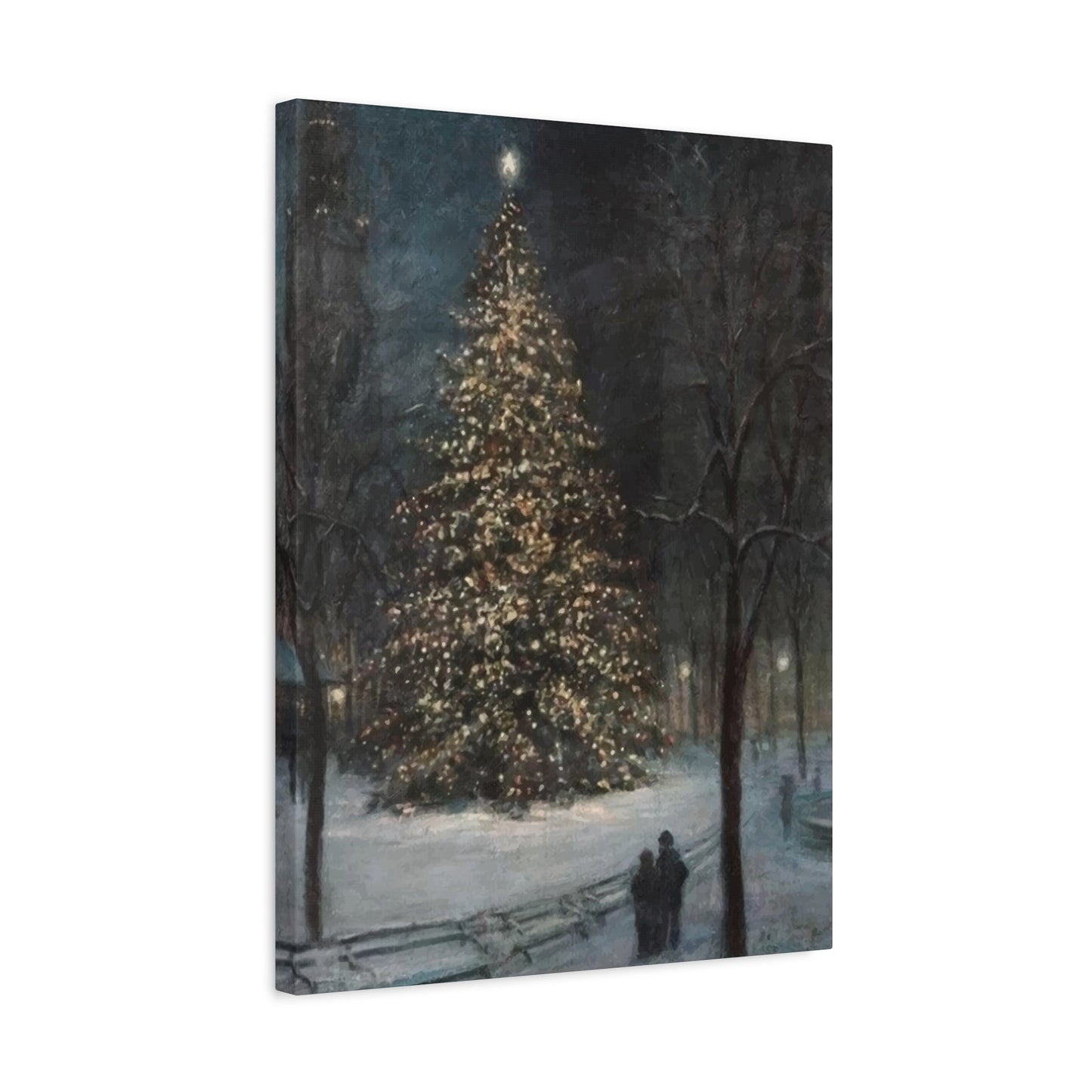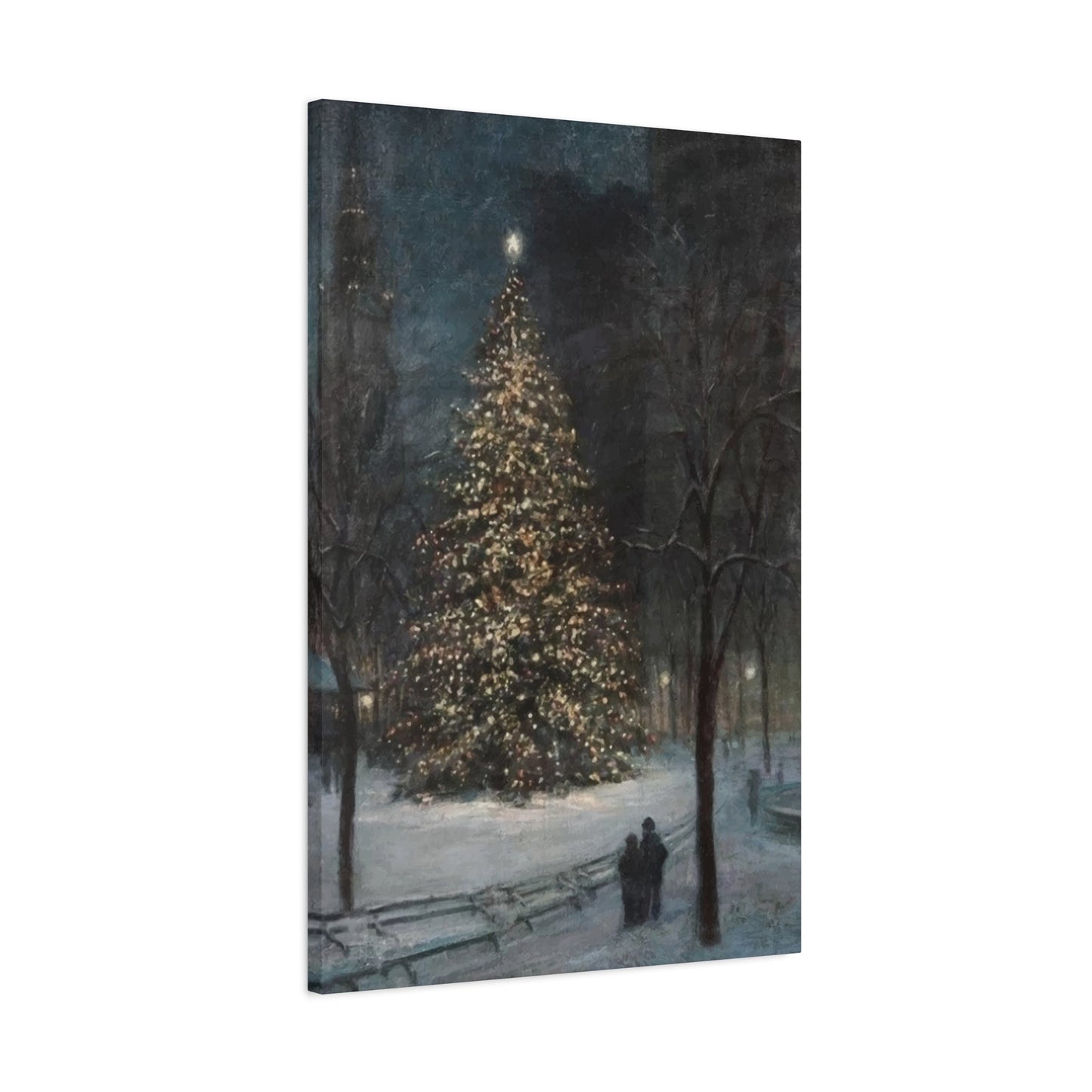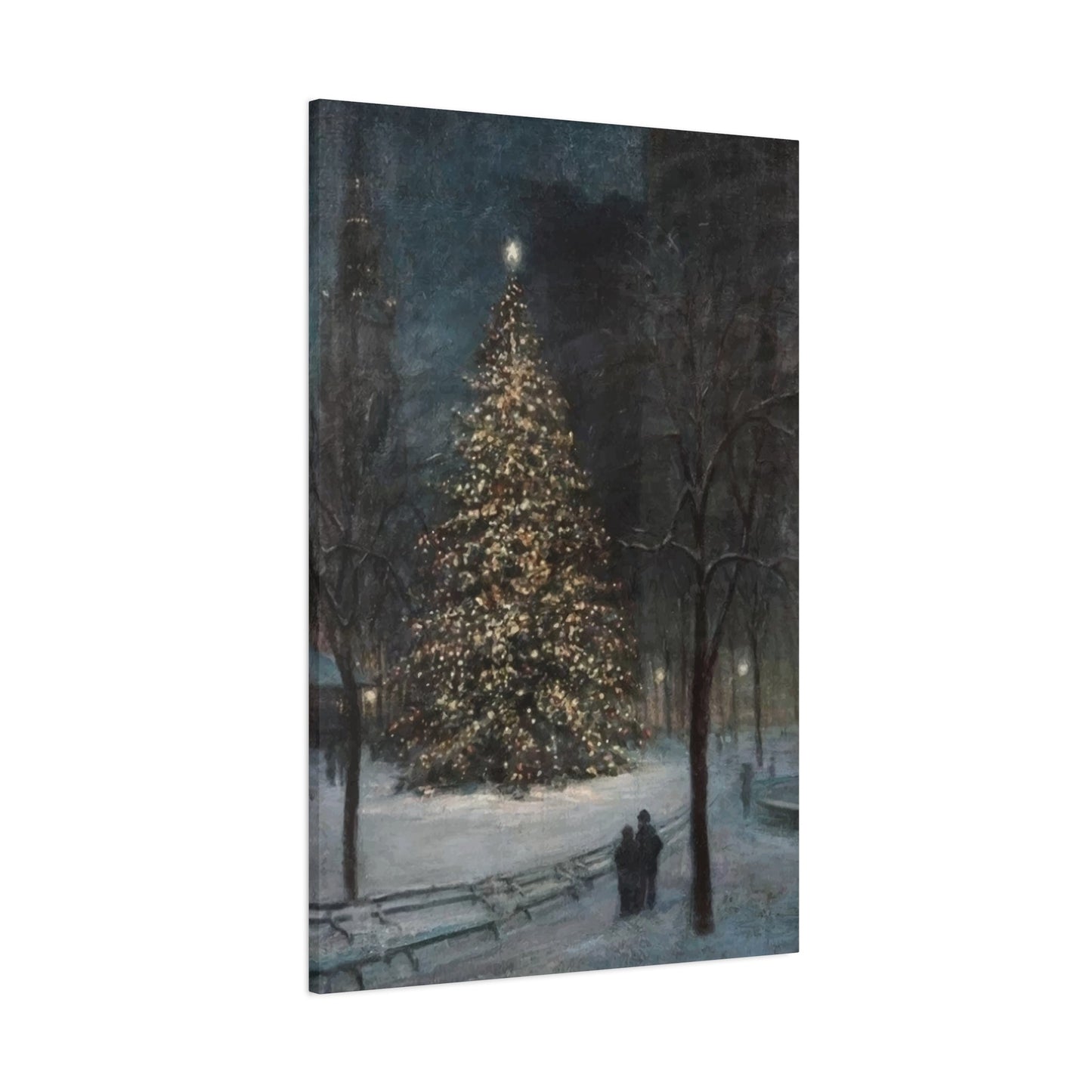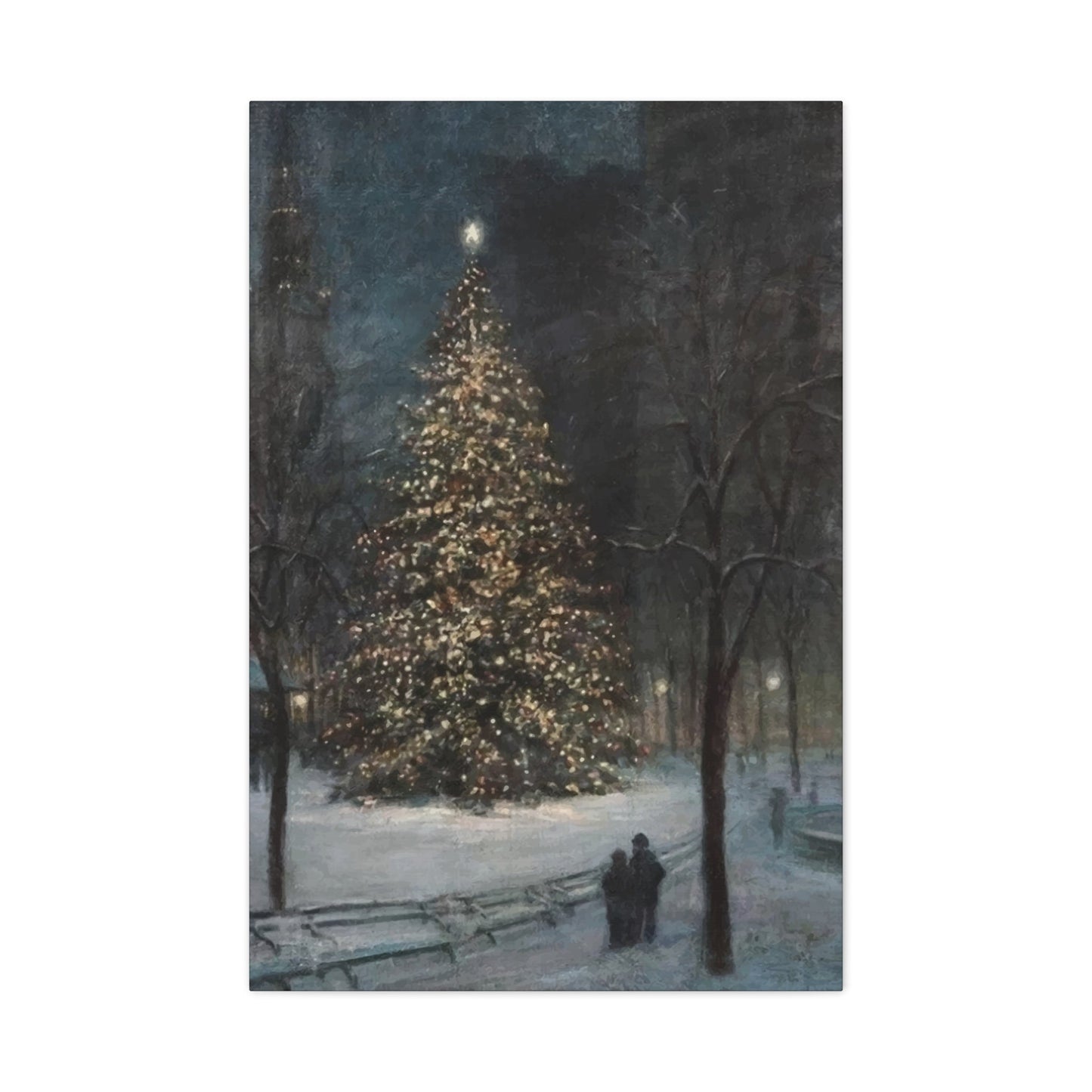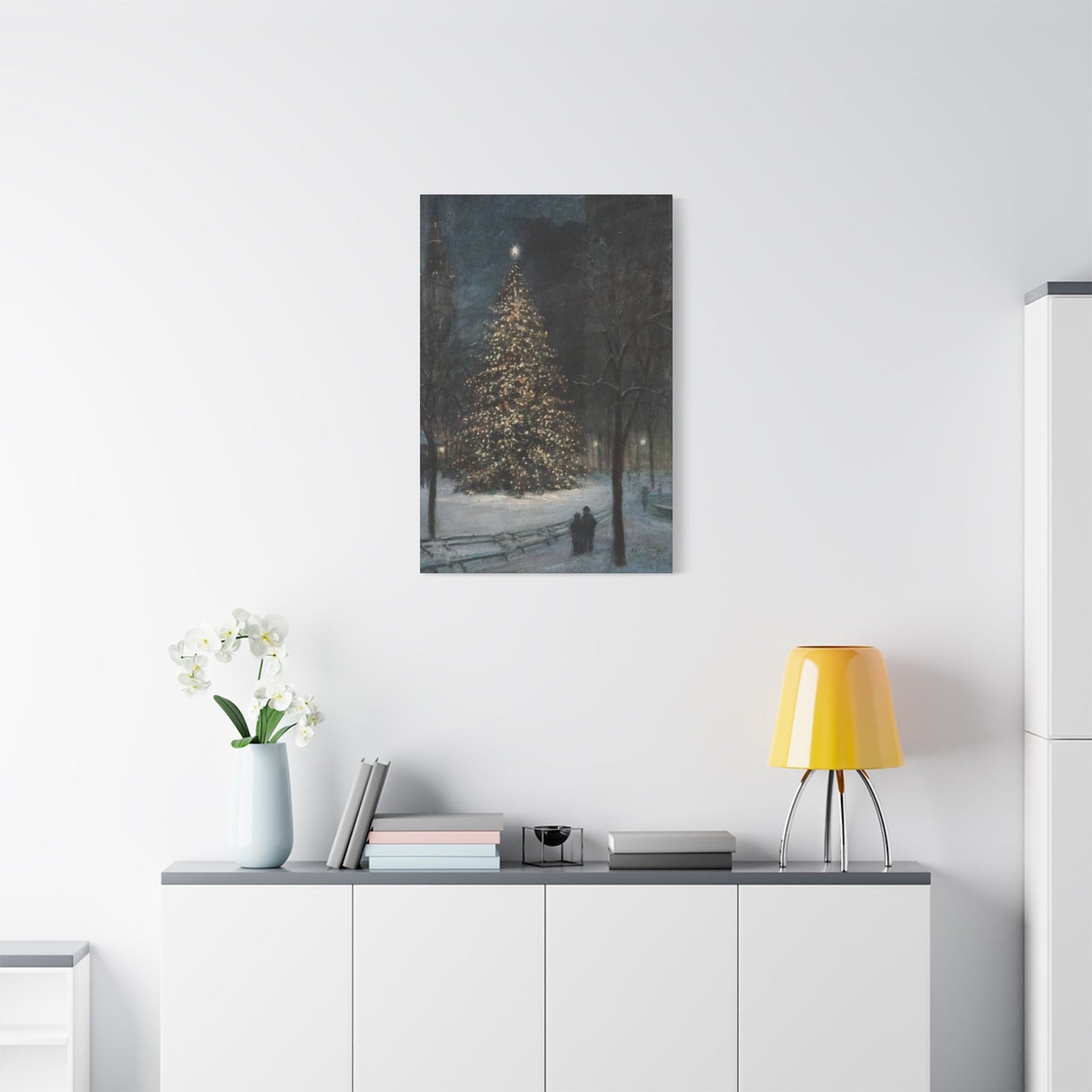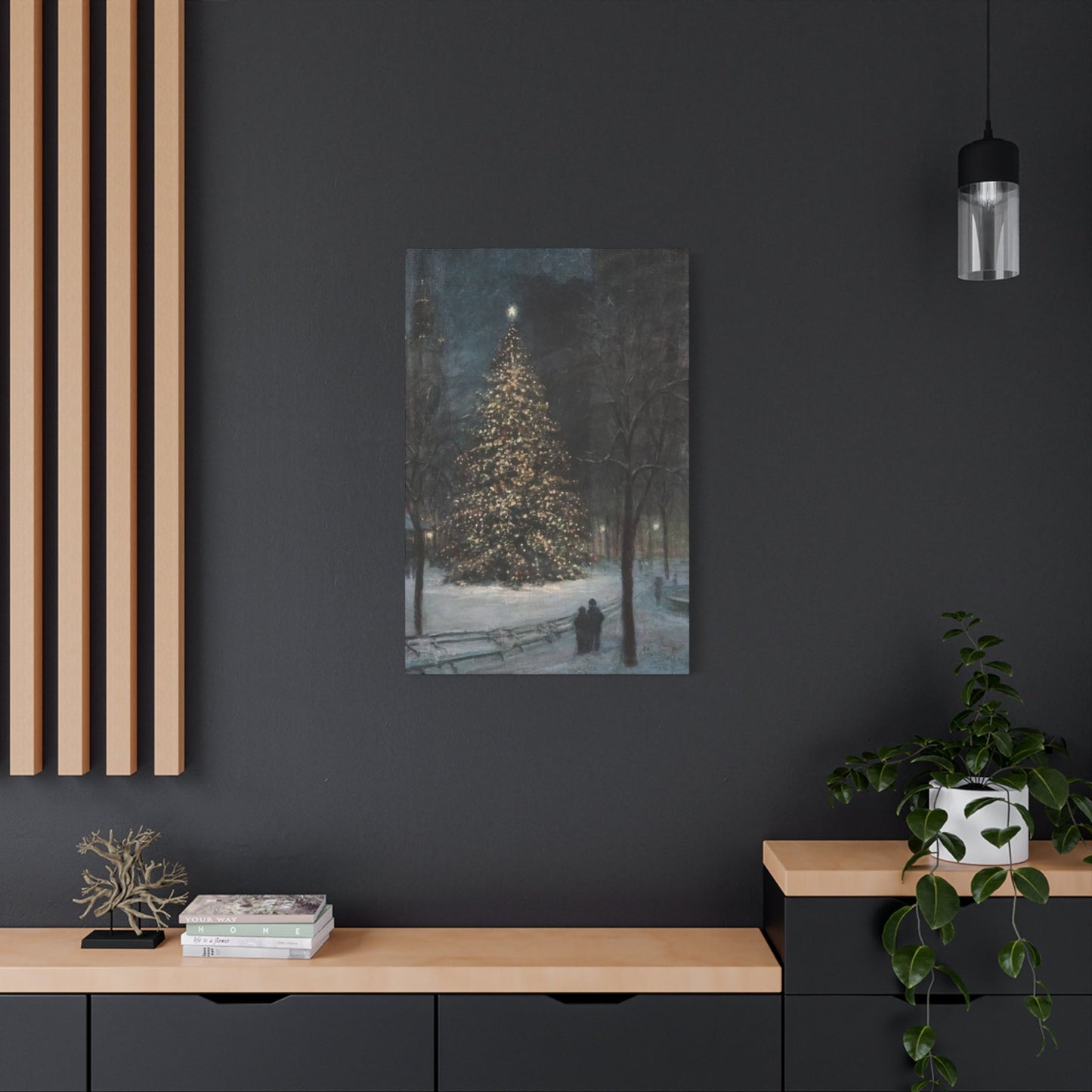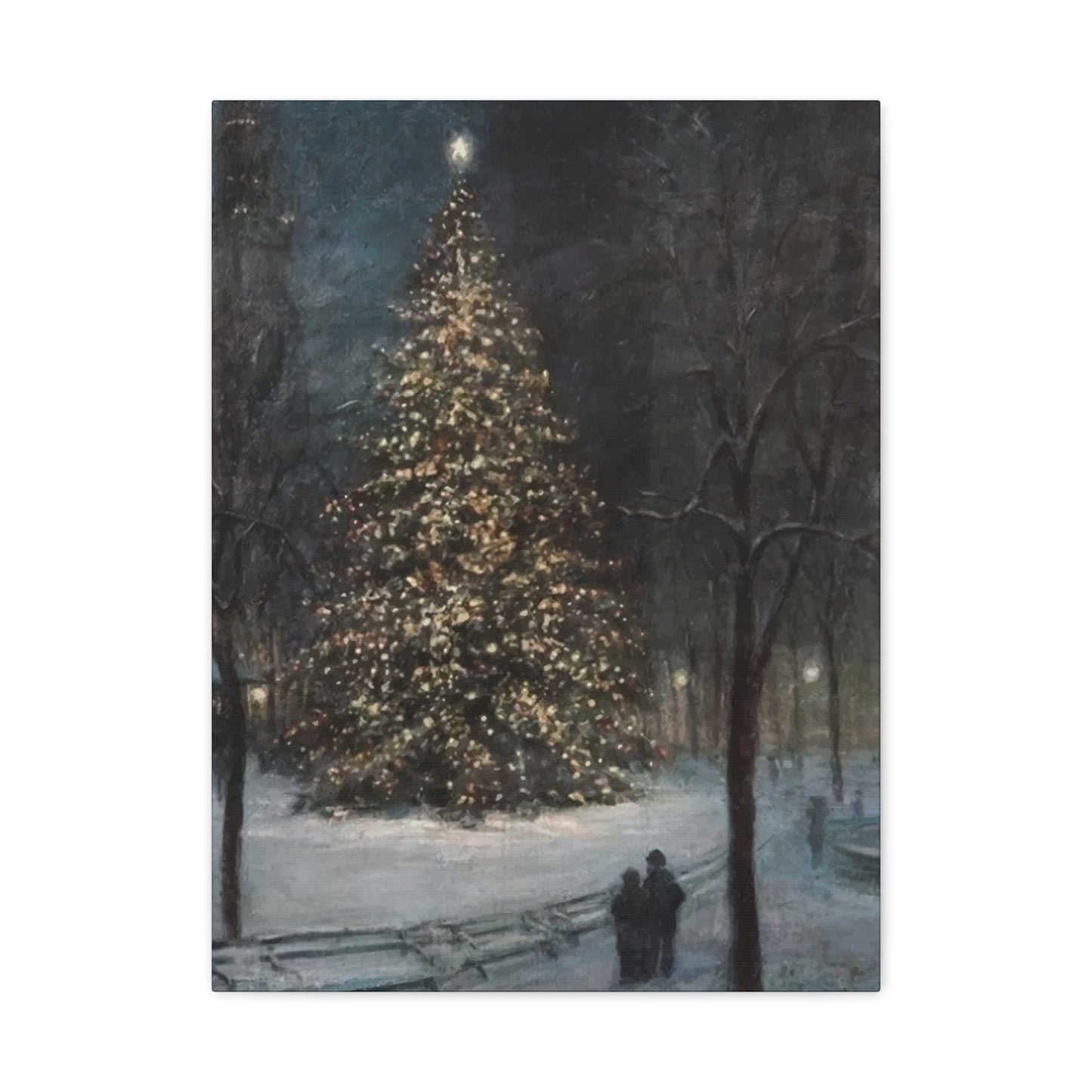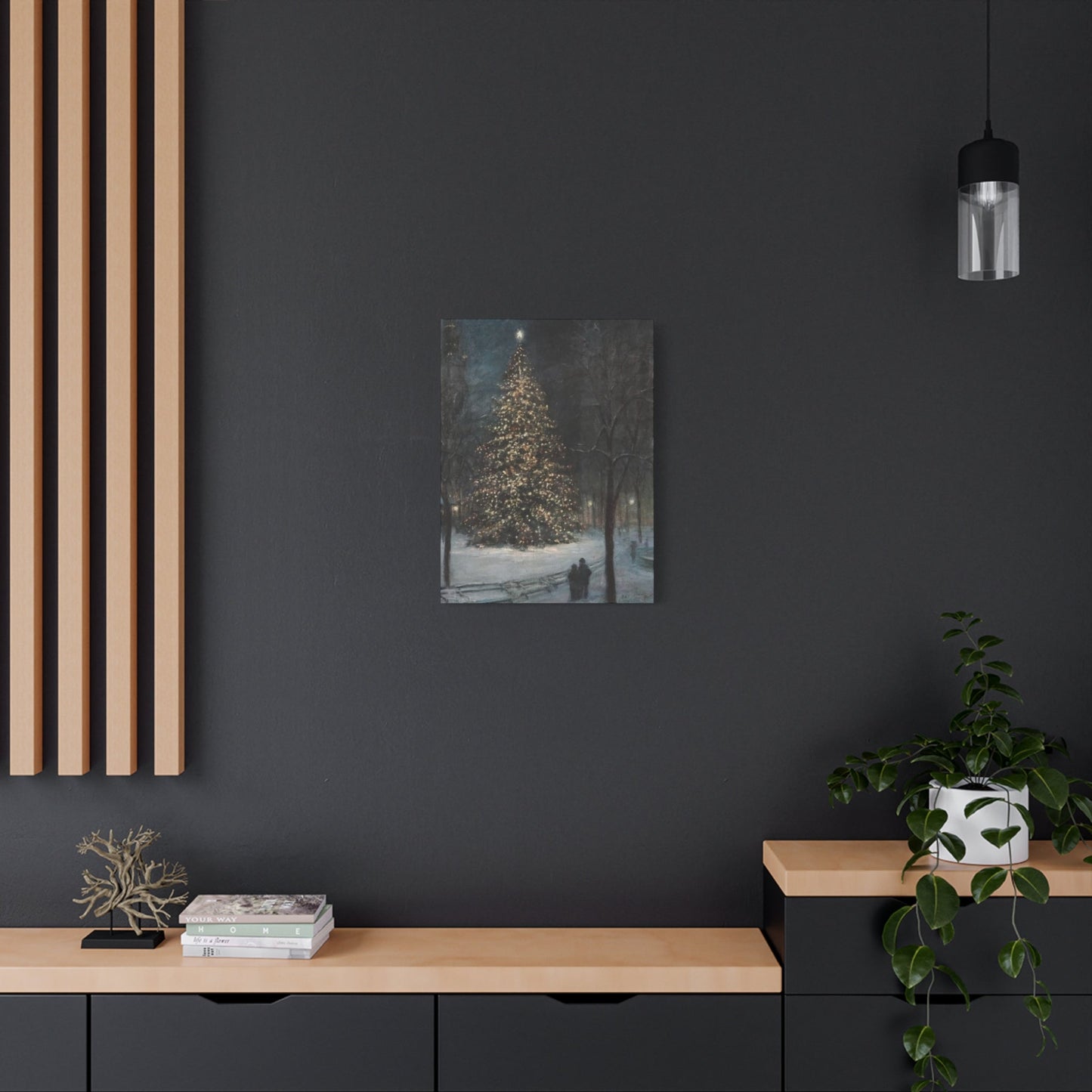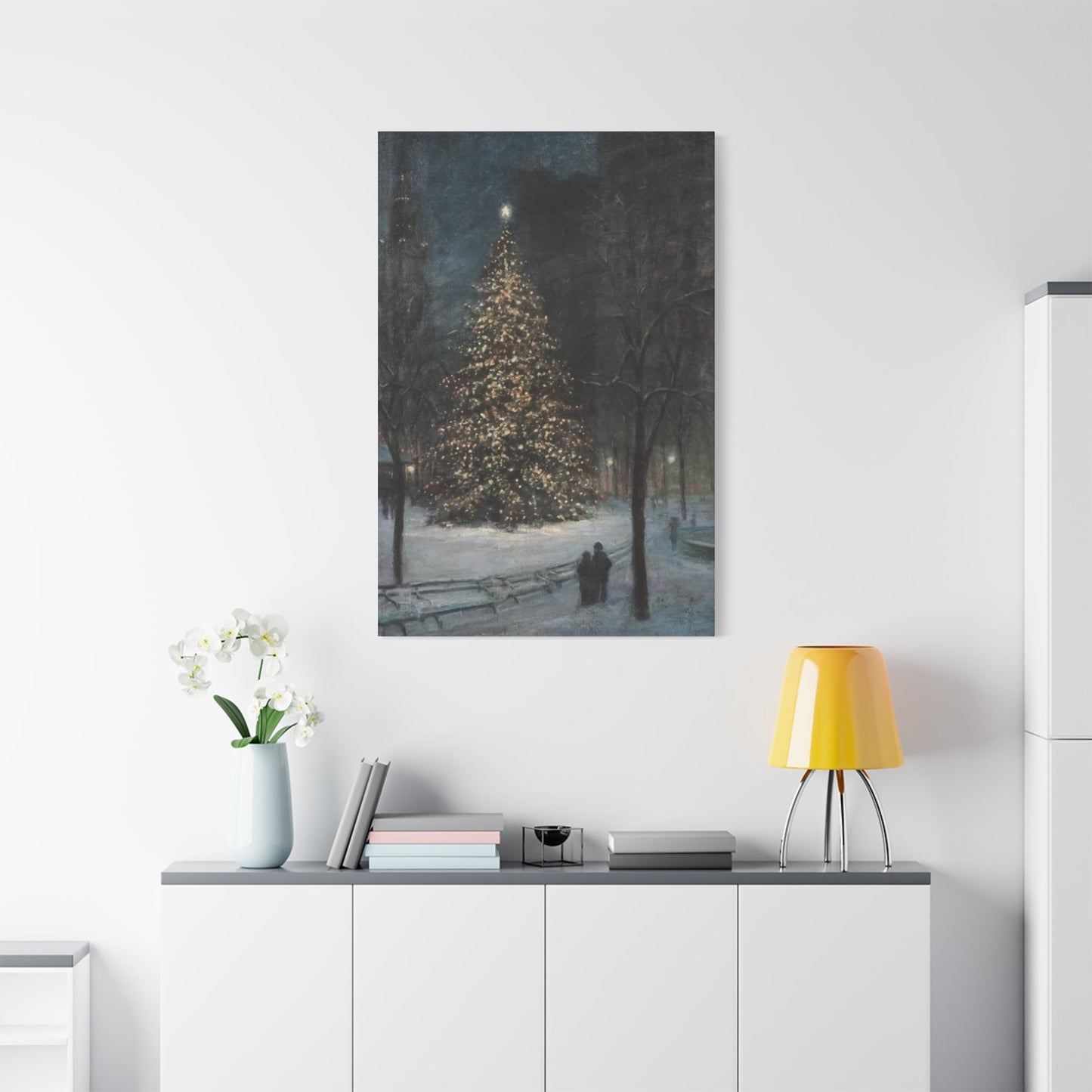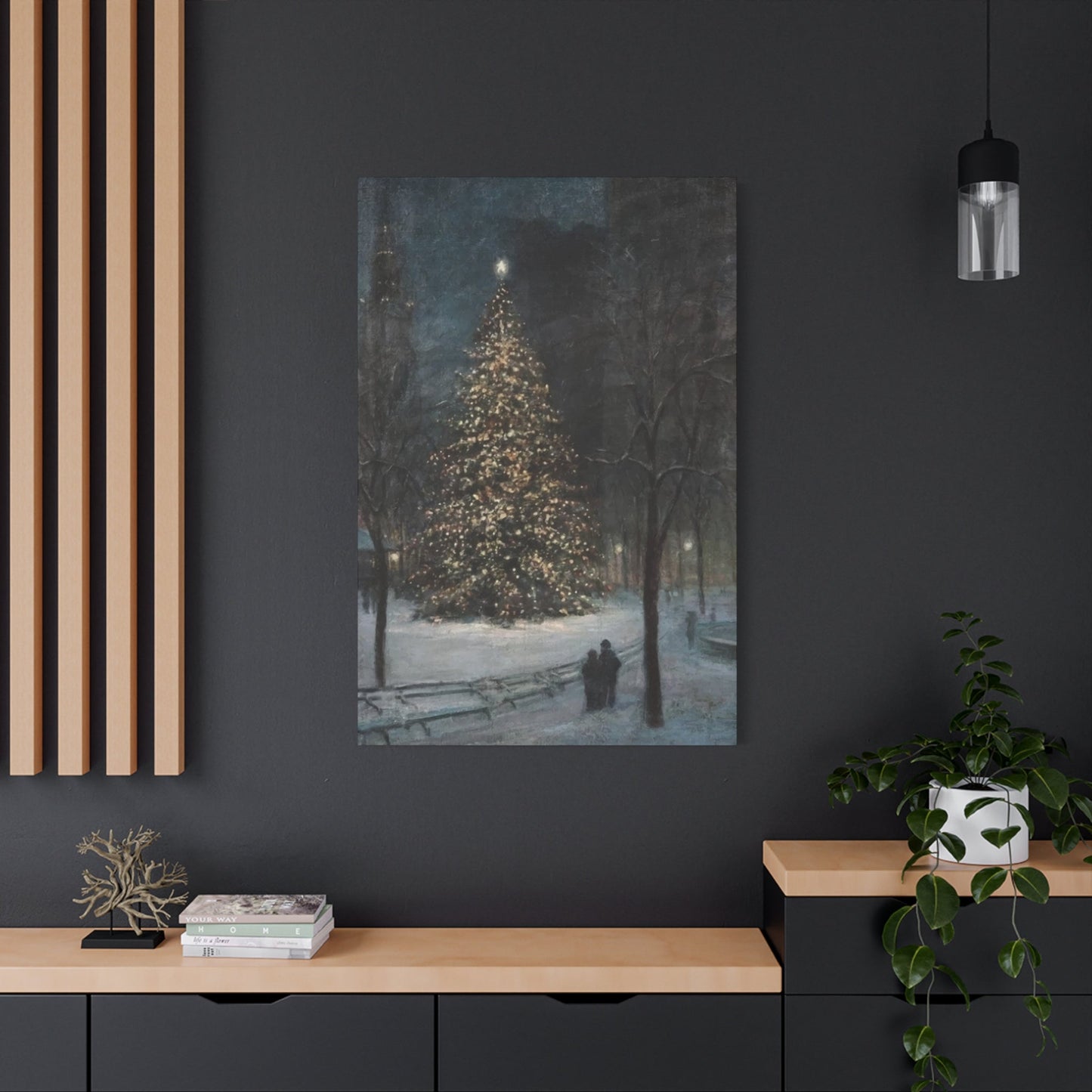Creative Christmas Tree Wall Art Ideas That Bring Holiday Magic to Your Home
The holiday season brings with it a desire to transform our homes into warm, welcoming havens that capture the spirit of Christmas. While traditional Christmas trees have long been the centerpiece of holiday decorating, innovative homeowners are discovering the charm and versatility of Christmas tree wall art. This creative approach to holiday decorating offers endless possibilities for expressing festive cheer while maximizing room efficiency and minimizing cleanup.
Christmas tree wall art represents a revolutionary approach to holiday decorating that combines artistic expression with practical functionality. Unlike conventional trees that require significant floor area, these artistic alternatives can transform any vertical surface into a stunning focal point. From minimalist designs that appeal to modern sensibilities to elaborate creations that capture traditional holiday warmth, these decorative solutions offer something for every style preference and budget consideration.
The beauty of Christmas tree wall art lies in its adaptability and personalization potential. Each creation becomes a unique reflection of the creator's personality, family traditions, and artistic vision. Whether crafted from natural materials gathered during autumn walks, repurposed household items, or carefully selected decorative elements, these artistic trees tell stories that resonate long after the holiday season ends.
Family Photo Christmas Tree Walls
Creating a family photo Christmas tree represents one of the most meaningful approaches to holiday wall art. This deeply personal decorating technique transforms cherished memories into a stunning visual display that celebrates both the holiday season and family bonds. The process involves arranging family photographs in a triangular tree formation, creating a unique centerpiece that grows more precious with each passing year.
The foundation of a successful family photo Christmas tree begins with careful photo selection. Choose images that span different time periods, capturing various family milestones, celebrations, and everyday moments that hold special significance. Mix formal portraits with candid snapshots, ensuring a balanced representation of family members across different ages and occasions. Consider including vintage photographs of grandparents and great-grandparents to create a multi-generational tribute that honors family history.
Arrangement techniques play a crucial role in achieving an aesthetically pleasing result. Begin by laying out the photos on a flat surface before committing to wall placement. The largest or most significant photo typically anchors the bottom center of the tree, with smaller images radiating outward to form the characteristic triangular shape. Vary the sizes of frames to create visual interest, incorporating different textures and materials such as rustic wood, elegant metal, or colorful plastic frames.
Color coordination enhances the overall impact of the display. While maintaining the triangular tree shape, consider the color palette of the photographs themselves and how they interact with frame choices. Sepia-toned vintage photos pair beautifully with antique gold frames, while vibrant contemporary images shine in sleek silver or white frames. Some families choose to convert all photos to black and white for a cohesive, timeless appearance that emphasizes emotional content over color variation.
The installation process requires careful planning and precise execution. Use a level and measuring tape to ensure symmetrical placement, beginning with the central bottom image and working upward and outward. Consider using removable adhesive strips for renters or those who prefer non-permanent solutions. For more permanent installations, small nails or picture hanging systems provide secure mounting that withstands the test of time.
Seasonal updates keep the family photo tree fresh and engaging year after year. Replace some photos with recent additions, incorporating new family members, special achievements, or memorable moments from the past year. This ongoing curation process makes the tree a living, evolving tribute to family growth and change. Some families establish annual traditions around updating their photo tree, making it a collaborative project that brings everyone together during the holiday preparation process.
Lighting considerations can dramatically enhance the visual impact of a family photo tree. Strategically placed LED string lights around the perimeter create a warm, festive glow that highlights the photographs while maintaining the tree silhouette. Battery-operated lights offer flexibility in placement without concerns about electrical outlets or visible cords. Warm white lights provide a classic, cozy ambiance, while multi-colored options add playful energy appropriate for families with young children.
Modern vs. Classic Tree Wall Art
The distinction between modern and classic Christmas tree wall art reflects broader design philosophies that influence contemporary home decorating. Understanding these contrasting approaches enables homeowners to choose styles that complement their existing decor while expressing personal aesthetic preferences. Modern tree wall art embraces minimalism, clean lines, and innovative materials, while classic designs celebrate traditional elements, rich textures, and time-honored holiday symbols.
Modern Christmas tree wall art prioritizes simplicity and geometric precision. These designs often feature streamlined triangular forms created through strategic lighting placement, geometric wall decals, or carefully arranged contemporary ornaments. The color palette typically remains neutral, incorporating whites, silvers, and metallics that blend seamlessly with modern home decor. Materials such as brushed steel, acrylic, and LED technology create sleek, sophisticated appearances that appeal to design-conscious homeowners.
The modern approach emphasizes negative space as an integral design element. Rather than filling every available area with decorative items, modern tree wall art allows breathing room that enhances visual impact through restraint. This philosophy aligns with contemporary design principles that value quality over quantity, creating focal points through careful curation rather than abundant ornamentation. The result often appears effortless yet sophisticated, requiring considerable planning to achieve the desired effect.
Classic Christmas tree wall art embraces abundance, warmth, and traditional holiday imagery. These designs incorporate familiar elements such as evergreen branches, warm golden lighting, rich red and green color schemes, and nostalgic ornaments that evoke childhood memories and established holiday traditions. Materials often include natural elements like pine boughs, burlap, vintage ornaments, and warm incandescent lighting that creates a cozy, welcoming atmosphere.
Traditional designs frequently incorporate layered textures that add depth and visual interest. Combining various materials such as fabric, paper, natural elements, and metallic accents creates rich, complex compositions that reward closer examination. This layering technique reflects historical decorating practices where accumulation of meaningful objects over time created personalized displays that told family stories through collected treasures.
Color psychology plays different roles in modern versus classic approaches. Modern designs often utilize cool tones that create calm, sophisticated environments aligned with contemporary stress-reduction goals. Classic designs embrace warm colors that stimulate comfort, nostalgia, and emotional connection to cherished holiday memories. Understanding these psychological impacts helps homeowners choose approaches that support their desired holiday atmosphere.
Scale and proportion considerations vary significantly between styles. Modern tree wall art often features bold, dramatic statements that command attention through size and strategic placement. A single, large-scale triangular arrangement might dominate an entire wall, creating maximum impact through minimalist execution. Classic designs frequently incorporate multiple smaller elements that build visual complexity through accumulation and variety.
Installation methods reflect the underlying philosophies of each approach. Modern designs often require precise measurements, professional-grade mounting hardware, and careful attention to symmetry and balance. The goal is achieving a clean, intentional appearance that appears effortless while requiring considerable planning. Classic installations embrace a more organic, evolved appearance that tolerates slight irregularities and imperfections as part of their charm.
Maintenance requirements differ considerably between modern and classic tree wall art. Modern designs, with their emphasis on clean lines and minimal ornamentation, often require less ongoing maintenance but demand perfection in their execution. Any dust, damage, or misalignment becomes immediately apparent against the stark simplicity. Classic designs, with their layered complexity, may hide minor imperfections but require more extensive cleaning and periodic reorganization to maintain their intended appearance.
Hanging Tips for Tree Wall Art
Proper hanging techniques form the foundation of successful Christmas tree wall art installations. Whether creating elaborate displays or simple designs, understanding the principles of wall mounting, weight distribution, and visual balance ensures both safety and aesthetic success. The hanging process involves multiple considerations, from wall surface assessment to hardware selection, each contributing to the final result's stability and appearance.
Wall surface evaluation represents the critical first step in any hanging project. Different wall types require specific approaches and hardware solutions. Drywall installations typically require wall anchors for anything heavier than a few pounds, while brick or concrete surfaces need masonry screws or toggle bolts. Plaster walls, common in older homes, require gentle handling and specialized fasteners that won't cause cracking or crumbling. Identifying wall studs provides the strongest mounting points for heavy installations, though not all tree wall art arrangements align conveniently with stud locations.
Weight distribution planning prevents failures that could damage both the artwork and the wall surface. Calculate the total weight of all components, including frames, ornaments, lighting, and any additional decorative elements. Distribute this weight across multiple hanging points rather than relying on single fasteners. For heavier installations, consider using picture hanging systems that distribute weight across horizontal rails rather than individual wall anchors.
Tool selection and preparation streamline the installation process while ensuring professional results. Essential tools include a level, measuring tape, pencil for marking, drill with appropriate bits, and various fasteners suited to the wall type and artwork weight. A laser level can prove invaluable for complex arrangements requiring precise alignment across multiple elements. Having all tools readily available prevents interruptions during the installation process that could compromise accuracy.
Planning the layout before making any permanent wall marks saves time and prevents costly mistakes. Create paper templates or use painter's tape to outline the intended tree shape and component positions. Step back frequently during the planning process to assess proportions and make adjustments before committing to final placement. This pre-visualization technique helps identify potential issues and allows for modifications without wall damage.
String and wire considerations affect both security and aesthetics. High-quality picture wire provides reliable support while remaining nearly invisible when properly installed. For arrangements incorporating multiple small elements, consider using transparent fishing line or thin metal wire that disappears against most wall colors. Ensure wire connections can support more weight than technically required, providing a safety margin against failure.
Spacing and proportion guidelines help achieve visually pleasing arrangements that feel intentional rather than random. The golden ratio principle can guide component placement, creating naturally appealing proportions that feel comfortable to viewers. Maintain consistent spacing between similar elements while allowing for slight variations that prevent mechanical appearance. Step back frequently during installation to assess overall balance and make adjustments as needed.
Lighting integration requires special consideration during the hanging process. Plan electrical connections and cord management before installing other components. Use cord covers or strategic routing to hide wiring and maintain clean appearances. For battery-operated lighting, ensure easy access to battery compartments for future maintenance. Consider timer functionality that automates lighting schedules without requiring daily intervention.
Safety protocols protect both the installer and the surrounding area during hanging projects. Use appropriate ladders or step stools rather than improvising with chairs or other unstable surfaces. Have an assistant available for larger installations to help guide pieces into position and provide safety support. Clear the area below the work zone to prevent damage from dropped tools or components.
Seasonal removal and storage planning should influence hanging method selection. Choose fasteners and techniques that allow for easy removal without wall damage if the display is temporary. Label components and hardware for easy reassembly in future years. Store delicate elements in protective materials that prevent damage during off-season storage periods.
Testing and adjustment procedures ensure long-term stability and appearance. After initial installation, gently test the security of all mounting points. Check that no elements appear crooked or unstable. Make minor adjustments to improve visual balance and component alignment. Schedule periodic inspections throughout the holiday season to identify and address any issues before they become problems.
Budget Christmas Tree Wall Decor
Creating stunning Christmas tree wall art without exceeding budget constraints challenges creativity while proving that memorable holiday decorations need not require significant financial investment. Budget-conscious approaches focus on resourcefulness, repurposing existing materials, and strategic shopping that maximizes visual impact per dollar spent. These economical solutions often result in more personal, meaningful displays that reflect individual creativity rather than purchasing power.
Dollar store treasures provide abundant raw materials for budget Christmas tree wall art projects. These retail locations stock seasonal items, craft supplies, and household goods that adapt beautifully to holiday decorating purposes. Plastic ornaments, garland, ribbon, adhesive hooks, and battery-operated lights offer building blocks for countless creative combinations. The key lies in viewing these items not as finished products but as components in larger artistic visions.
Thrift store exploration unveils unexpected treasures perfect for repurposing into holiday wall art. Vintage ornaments, unusual frames, decorative plates, and even jewelry can transform into tree components when approached with creative vision. These secondhand finds often possess character and patina that new items lack, adding authentic charm to finished displays. Regular thrift store visits throughout the year allow for gradual collection of materials when prices remain consistently low.
Natural material collection costs nothing beyond time investment while providing authentic, biodegradable decorating elements. Fallen branches, pinecones, interesting stones, and dried flowers create organic tree wall art that celebrates natural beauty. Seasonal gathering walks combine family time with material collection, making the creation process part of the holiday tradition. These natural elements complement purchased materials while reducing overall project costs.
Repurposing household items demonstrates creative resourcefulness while eliminating additional expenses. Empty toilet paper rolls become ornament holders, old magazines provide colorful paper for origami decorations, and unused fabric scraps transform into garland or ornament covers. Kitchen items such as cookie cutters, mason jars, and aluminum foil find new purposes in holiday wall art applications.
Strategic shopping timing significantly impacts project budgets. Post-holiday clearance sales offer ornaments, lights, and decorating supplies at dramatic discounts for the following year. Black Friday and other major sale events provide opportunities to stock up on craft supplies and decorating materials. End-of-season sales at garden centers offer discounted natural materials like wreaths and garland that adapt well to wall art applications.
DIY ornament creation eliminates the need for expensive purchased decorations while adding personal touches that reflect family interests and creativity. Paper snowflakes, salt dough ornaments, and painted pinecones cost pennies to create while providing hours of family bonding time. These handmade elements often become cherished keepsakes that return year after year, accumulating sentimental value that far exceeds their modest material costs.
Community resource sharing expands available materials without individual expense. Neighborhood groups, social media communities, and local craft circles often coordinate material swaps where participants trade excess supplies for needed items. These exchanges introduce crafters to new materials and techniques while building community connections around shared creative interests.
Lighting solutions need not break the budget while still providing essential ambiance for tree wall art displays. Battery-operated LED string lights from discount retailers offer reliable, efficient lighting at fraction of premium brand costs. Solar-powered options eliminate ongoing battery expenses while providing environmentally friendly operation. Strategic placement maximizes impact from limited lighting quantities.
Measurement and planning prevent costly mistakes that require additional material purchases. Careful measurement ensures adequate material quantities while avoiding overbuying that strains budgets unnecessarily. Creating detailed plans and shopping lists helps maintain focus on essential items rather than impulse purchases that inflate project costs without improving results.
Tool borrowing and sharing reduces equipment expenses for projects requiring specialized items. Many communities have tool libraries or informal sharing networks where residents borrow equipment for occasional use rather than purchasing items that see limited application. Family members, friends, and neighbors often willingly share tools in exchange for similar access to borrowed items.
Kids' Christmas Tree Wall Projects
Engaging children in Christmas tree wall art projects creates lasting memories while developing creativity, fine motor skills, and collaborative abilities. These family activities combine holiday excitement with educational opportunities that teach planning, problem-solving, and artistic expression. Child-friendly projects prioritize safety, age-appropriate techniques, and fun over perfection, ensuring positive experiences that encourage continued creative exploration.
Age-appropriate project selection ensures successful outcomes while building confidence in young creators. Toddlers and preschoolers excel at simple tasks like placing pre-cut shapes or applying adhesive decorations under supervision. Elementary-age children can handle more complex cutting, measuring, and assembly tasks while still requiring adult guidance for safety-sensitive activities. Teenagers can take on leadership roles in family projects while developing independence in their own creative expressions.
Safety considerations must guide every aspect of child-involved projects. Choose non-toxic materials, avoid sharp tools or small parts that present choking hazards, and ensure adequate ventilation when using adhesives or paints. Establish clear work areas where children can create without risking damage to furniture or other household items. Provide age-appropriate tools that enable success while minimizing injury risks.
Paper-based projects offer endless possibilities while remaining budget-friendly and safe for children of all ages. Construction paper trees built through collaborative cutting and pasting teach shapes, colors, and spatial relationships while creating beautiful wall displays. Paper chain garland provides repetitive activity that develops fine motor skills while contributing to larger artistic goals. Origami ornaments challenge older children while introducing cultural traditions and geometric concepts.
Handprint and footprint art creates deeply personal tree wall art that captures children at specific developmental stages. These impressions become treasured keepsakes that document growth over time while serving immediate decorating purposes. Paint handprints in green can form tree shapes, while fingerprints add texture and detail to branches and foliage. Combining multiple family member prints creates collaborative trees that represent family unity.
Felt crafting projects provide tactile experiences that appeal to children who learn through touch and manipulation. Pre-cut felt shapes allow young children to arrange and rearrange elements before final placement, encouraging experimentation and decision-making. Older children can learn basic cutting and gluing techniques while creating felt ornaments that add three-dimensional interest to wall displays.
Educational integration transforms decorating projects into learning opportunities that support academic development. Math concepts emerge through measuring, counting, and pattern recognition activities. Science learning occurs through discussions of tree biology, seasonal changes, and material properties. Language arts development happens through storytelling about family traditions and creative writing about holiday wishes and memories.
Collaborative family activities strengthen bonds while distributing project tasks among family members according to their abilities and interests. Assign specific roles that match each child's developmental level while ensuring everyone contributes meaningfully to the final result. These shared experiences create positive associations with holiday traditions while teaching cooperation and compromise skills.
Documentation and preservation of the creative process adds value beyond the finished product. Photograph children working on projects, capture expressions of concentration and joy, and record stories they tell about their contributions. Create digital or physical scrapbooks that combine finished artwork images with process documentation and written reflections about the experience.
Annual tradition development transforms individual projects into ongoing family customs that children anticipate each holiday season. Establish consistent timing, roles, and traditions around tree wall art creation while allowing for evolution as children grow and family circumstances change. These traditions provide stability and continuity that children carry into their own future families.
Storage and preservation planning helps maintain completed projects for future enjoyment and nostalgic reflection. Photograph fragile items that may not survive long-term storage while carefully preserving durable elements that can return in subsequent years. Label items with creation dates and creator names to maintain family history connections over time.
Clean-up strategies prevent project aftermath from overwhelming family living areas while teaching responsibility and care for shared resources. Establish clear expectations about workspace maintenance during and after creative activities. Provide adequate cleanup supplies and involve children in restoration activities appropriate to their developmental levels.
Using Garland for Tree Wall Art
Garland transforms from traditional mantle decoration into versatile tree wall art through creative arrangement techniques that emphasize its flowing, organic qualities. This flexible decorating medium adapts to various wall sizes, room styles, and personal preferences while providing rich texture and natural movement that enhances any holiday display. Understanding garland varieties, installation methods, and styling techniques enables homeowners to create sophisticated tree wall art that rivals more complex alternatives.
Garland variety selection significantly impacts the final appearance and maintenance requirements of tree wall art installations. Fresh evergreen garland provides authentic pine fragrance and traditional appearance but requires careful moisture management and eventual replacement as needles dry and drop. Artificial alternatives offer consistency, reusability, and reduced maintenance while advancing manufacturing techniques create increasingly realistic appearances that satisfy most decorating goals.
Pine and fir varieties each contribute distinct characteristics to garland-based tree wall art. Noble fir garland features sturdy branches and excellent needle retention, making it ideal for installations that remain in place throughout the holiday season. Fraser fir provides classic Christmas tree fragrance with strong branches that support additional decorative elements. Pine varieties offer different needle textures and colors that create varied visual effects when combined or used individually.
Installation techniques for garland tree wall art require different approaches than traditional garland hanging applications. Creating tree shapes requires strategic anchor points that support the garland's weight while maintaining the desired triangular silhouette. Begin at the tree's apex and work downward, creating increasingly wider layers that establish the characteristic tree profile. Use removable hooks or nails placed at measured intervals to ensure symmetrical placement.
Layering strategies add depth and visual complexity to garland tree installations. Combine different garland types, such as mixed evergreen varieties or evergreen with berry-adorned alternatives, to create rich, textured appearances. Varying the positioning of different layers prevents flat, one-dimensional results while adding natural irregularity that mimics real tree growth patterns.
Decorative enhancement opportunities multiply when using garland as the tree foundation. The sturdy branches support traditional ornaments, ribbon, lights, and other decorative elements while providing natural attachment points that eliminate the need for additional hardware. Weave ribbon throughout the garland layers to add color accents and elegant movement. Strategic ornament placement creates focal points while maintaining overall tree silhouette integrity.
Lighting integration with garland requires special consideration for both safety and aesthetic effect. LED string lights generate less heat than traditional incandescent alternatives, reducing fire risks when used with dry natural materials. Weave lights throughout the garland rather than simply draping them on top to create even illumination that highlights the garland's texture and depth. Battery-operated lights provide flexibility in placement without concerns about electrical outlet proximity.
Maintenance considerations vary significantly between fresh and artificial garland installations. Fresh garland requires periodic misting to maintain needle retention and color vibrancy. Place protective coverings on floors beneath installations to catch fallen needles and prevent carpet or flooring damage. Monitor garland condition throughout the season and remove any sections showing excessive drying or needle loss.
Color coordination planning ensures garland tree wall art complements existing room decor while maintaining holiday appeal. Traditional green garland pairs well with red and gold accents for classic holiday aesthetics. Flocked or snow-dusted garland creates winter wonderland effects that complement cool color schemes and contemporary decor. Mixed evergreen garland with natural brown branches provides rustic appeal appropriate for cabin or country decorating themes.
Size scaling techniques help create proportional garland trees appropriate for available wall dimensions. Large walls accommodate substantial garland quantities arranged in full tree shapes with wide bases and tall profiles. Smaller areas benefit from compact tree designs that maintain proper proportions while fitting within spatial constraints. Consider room ceiling height when planning tree dimensions to ensure adequate clearance for lighting fixtures and comfortable visual proportions.
Storage and preservation practices extend the life of artificial garland while preparing fresh materials for proper disposal. Artificial garland benefits from careful coiling and storage in protective containers that prevent tangling and crushing. Document storage methods with photos or diagrams that facilitate easy reassembly in subsequent seasons. Fresh garland can be composted or used in outdoor decorating applications after indoor use ends.
Rustic Christmas Tree Wall Designs
Rustic Christmas tree wall designs celebrate natural materials, weathered textures, and handcrafted aesthetics that evoke cozy cabin retreats and traditional holiday celebrations. These approaches emphasize authenticity over perfection, incorporating elements that show age, wear, and natural variation as desirable characteristics rather than flaws to conceal. Understanding rustic design principles enables homeowners to create warm, inviting holiday displays that feel genuine and welcoming.
Natural wood forms the foundation of most rustic Christmas tree wall art, providing structural elements and authentic texture that manufactured materials cannot replicate. Reclaimed barn wood, weathered fence posts, and fallen branches each contribute unique characteristics shaped by time and environmental exposure. The patina, grain patterns, and surface irregularities of aged wood add character that new materials lack, creating focal points that draw attention through their natural beauty.
Wood selection and preparation require understanding different species characteristics and weathering effects. Oak develops rich, dark patina with age while maintaining structural integrity under various conditions. Pine shows resin bleeding and distinctive grain patterns that create visual interest. Cedar provides natural insect resistance and pleasant aromatic qualities that enhance the sensory experience of rustic displays. Proper cleaning and preparation of reclaimed wood ensures safety while preserving desirable weathered characteristics.
Branch and twig integration adds organic elements that strengthen connections to natural environments. Collect materials during autumn walks or yard maintenance activities, selecting pieces with interesting shapes, textures, or attached elements like seed pods or bark patterns. Vary branch sizes to create visual hierarchy and natural growth patterns that mimic real tree structures. Consider local species availability and seasonal characteristics when planning collection activities.
Burlap and natural fabric applications provide texture contrasts while maintaining rustic authenticity. This coarse fabric adds warmth and softness to predominantly hard material installations while offering opportunities for color introduction through natural dyes or weathering effects. Use burlap as backing material, ribbon alternatives, or ornament covers that unify diverse elements within cohesive design schemes.
Metal accent integration introduces aged hardware and found object elements that enhance rustic authenticity. Vintage hinges, old nails, wire fragments, and weathered tools become decorative elements that tell stories while adding visual interest. Rust patina and oxidation effects contribute color variation and surface texture that complement natural wood characteristics. Exercise caution with sharp or unstable metal elements, especially in homes with young children.
Color palette development for rustic Christmas tree wall art draws inspiration from natural environments and traditional materials. Earth tones including various browns, deep greens, and muted reds create harmonious combinations that feel organic and unforced. Accent colors should appear naturally occurring rather than artificially bright, reflecting the subdued tones found in nature during winter months.
Texture layering techniques add depth and visual complexity that reward closer examination. Combine smooth and rough surfaces, soft and hard materials, and various pattern scales to create rich, tactile experiences. The interplay between different textures catches light differently throughout the day, creating subtle changes that maintain visual interest over extended viewing periods.
Lighting choices for rustic designs should complement rather than compete with natural material characteristics. Warm white LED lights create cozy ambiance without overwhelming rustic elements with excessive brightness. Edison bulb styles provide vintage appeal that aligns with rustic aesthetics while offering modern energy efficiency. Consider battery-operated options that eliminate visible electrical cords that could detract from natural appearances.
Tool and technique considerations for rustic projects often require traditional woodworking skills and hand tools that create authentic handmade characteristics. Hand saws, wood planes, and sandpaper produce surface effects that power tools cannot replicate. Embrace slight irregularities and imperfections as authenticity markers rather than flaws requiring correction.
Assembly and mounting methods should reflect traditional construction techniques while providing adequate structural support. Visible hardware should appear appropriately aged and utilitarian rather than decorative or ornate. Consider traditional joinery techniques like mortise and tenon connections that showcase craftsmanship while providing strong, durable assemblies.
Seasonal longevity planning allows rustic tree wall art to extend beyond Christmas into general winter or year-round decorating applications. Remove obviously Christmas-specific elements while retaining natural components that provide ongoing visual interest. This adaptability maximizes investment in quality natural materials while reducing storage requirements and seasonal decorating burdens.
Abstract Christmas Tree Wall Art
Abstract Christmas tree wall art liberates holiday decorating from literal representations, embracing artistic interpretation that suggests rather than depicts traditional tree forms. These creative approaches appeal to contemporary design sensibilities while maintaining essential holiday spirit through color, shape, and symbolic associations. Understanding abstract art principles enables homeowners to create sophisticated holiday displays that integrate seamlessly with modern home aesthetics.
Geometric interpretation transforms the traditional tree triangle into dynamic compositions using various shapes, lines, and spatial relationships. Triangular arrangements need not obviously resemble trees when composition, color, and context convey holiday intentions through more subtle means. Overlapping shapes create depth and movement while maintaining essential structural references that connect to Christmas tree associations without literal representation.
Color psychology in abstract designs carries greater importance than in representational art since emotional response depends more heavily on color associations than recognizable imagery. Traditional Christmas colors work effectively in abstract applications, but unconventional palette choices can create unique effects that surprise and delight viewers while maintaining holiday connections through carefully chosen accent elements or contextual placement.
Line and form exploration opens possibilities for expressing tree concepts through minimalist approaches that emphasize essential characteristics rather than detailed representation. Vertical lines suggest growth and height, while triangular compositions reference familiar tree silhouettes without requiring realistic detail. These simplified forms often create stronger visual impact than complex realistic attempts while requiring fewer materials and simpler installation processes.
Material experimentation becomes particularly important in abstract applications where texture, reflection, and surface characteristics contribute significantly to overall effect. Metallic materials create light play and reflection that adds movement and interest throughout changing daily light conditions. Translucent or transparent materials layer visual effects that create depth without requiring extensive three-dimensional construction.
Scale and proportion manipulation allows abstract tree wall art to fill large spaces dramatically or create intimate effects in smaller areas without losing visual impact. Oversized simple forms often read more effectively than complex detailed attempts, while series of smaller related elements can build visual rhythm and movement across extended wall surfaces.
Installation geometry requires careful consideration of viewing angles and sight lines that affect how abstract compositions read from different positions within rooms. Elements that align effectively from primary viewing positions may create confusing compositions when viewed from other angles, requiring compromising or multiple design considerations that accommodate various perspectives.
Seasonal adaptability represents a significant advantage of abstract approaches since removal or addition of specific elements can transform displays for different occasions without complete reinstallation. Color changes through lighting or removable accent pieces modify mood and seasonal association while maintaining basic structural arrangements that provide year-round visual interest.
Layering techniques in abstract applications create visual depth through overlapping elements that suggest three-dimensional relationships without requiring complex construction or significant wall projection. Transparent or translucent materials work particularly effectively for layering since they maintain visibility of background elements while adding color, texture, or pattern complexity.
Integration with existing artwork and decorating requires careful consideration of style relationships and visual competition between abstract tree wall art and other decorative elements. Abstract approaches often complement contemporary art collections more effectively than literal representations while requiring strategic placement that avoids visual conflicts or overwhelming compositional complexity.
Lighting interaction becomes crucial in abstract designs where shadow patterns, reflection effects, and illumination changes can dramatically alter perceived compositions throughout daily light cycles. Plan lighting integration from project beginning rather than adding illumination as afterthought, considering how different light sources and intensities affect color relationships and form perception.
Personal interpretation encouragement represents one of abstract art's greatest strengths since viewers bring individual associations and meanings to compositions that may differ from creator intentions while remaining equally valid and satisfying. This subjective quality allows abstract Christmas tree wall art to serve diverse family members and guests who may discover personal connections and meanings within the same display.
Chalkboard Christmas Tree Walls
Chalkboard Christmas tree wall art combines nostalgic charm with interactive functionality, creating dynamic displays that evolve throughout the holiday season. This versatile approach transforms walls into creative canvases where families can collaborate on artistic expressions, record holiday memories, and modify decorations based on changing preferences or special occasions. Understanding chalkboard preparation, design techniques, and maintenance requirements enables homeowners to create engaging holiday displays that serve multiple purposes.
Surface preparation forms the critical foundation for successful chalkboard tree installations. Commercial chalkboard paint provides durable, smooth surfaces that accept chalk cleanly while erasing completely with proper technique. Multiple thin coats produce superior results compared to single thick applications, requiring patience during application process but delivering professional-quality finished surfaces that remain functional for many seasons.
Design planning for chalkboard trees requires balancing permanent structural elements with changeable decorative components. Outline the basic tree shape using temporary chalk lines that guide proportional development while allowing modifications based on visual assessment during creation process. Consider incorporating fixed elements like hooks or mounting points for three-dimensional ornaments that complement drawn decorative elements.
Chalk selection significantly impacts both appearance and functionality of chalkboard tree designs. Traditional white chalk provides classic contrast and easy visibility but may create dusty conditions that require frequent cleaning. Colored chalk opens creative possibilities while potentially requiring more aggressive cleaning for complete removal. Chalk markers offer vibrant colors and reduced dust production but may require special removal techniques.
Artistic technique development enables creators to achieve various visual effects and textures within chalkboard medium limitations. Blending techniques create graduated shading and dimensional effects that add depth to flat surfaces. Stippling and cross-hatching provide texture variation that mimics natural materials like tree bark or needle clusters. Practice these techniques on separate surfaces before attempting final installations.
Family collaboration strategies maximize the social and creative benefits of chalkboard Christmas trees. Assign different tree sections to various family members, encouraging individual expression within unified compositions. Establish guidelines for shared areas while allowing personal creativity in designated zones. Regular family sessions for additions and modifications create ongoing engagement that maintains interest throughout the holiday season.
Interactive element integration transforms static chalkboard trees into dynamic displays that change based on family activities and holiday progression. Create countdown calendars within tree designs, add daily gratitude messages, or incorporate wish lists that evolve as gift-giving approaches. These interactive features encourage regular engagement while documenting family holiday experiences.
Maintenance and cleaning procedures ensure chalkboard surfaces remain functional and attractive throughout extended use periods. Regular dusting with dry cloths removes surface chalk residue before it accumulates into permanent staining. Periodic deep cleaning with appropriate cleaners restores surface receptivity while removing stubborn marks that resist standard erasing techniques. Establish cleaning schedules that maintain optimal surface conditions.
Seasonal transition planning allows chalkboard trees to adapt for different occasions while maximizing year-round utility of prepared surfaces. Winter themes can replace Christmas-specific imagery while maintaining tree structures that provide continuity. Spring and summer modifications transform tree shapes into flowering branches or leafy canopies that extend usefulness beyond holiday applications.
Photography documentation preserves ephemeral chalkboard creations that change frequently throughout their display periods. Capture evolution sequences showing how trees develop over time, recording both individual contributions and collaborative results. These digital records become treasured family memories that document creative processes as well as finished products.
Storage and tool organization maintains necessary supplies in accessible locations while protecting chalk and cleaning materials from moisture and temperature extremes. Dedicated containers for different chalk colors, erasers, and cleaning supplies encourage regular use while preventing loss or damage of essential materials. Label storage systems clearly to enable easy identification and inventory management.
Weather and humidity considerations affect chalkboard performance in various home environments. High humidity may cause chalk dust to cake or surfaces to become less receptive to marking. Very dry conditions may increase dust production and cause chalk to crumble excessively. Monitor environmental conditions and adjust maintenance routines accordingly to maintain optimal surface performance throughout diverse seasonal conditions.
Felt Christmas Tree Wall Crafts
Felt Christmas tree wall crafts offer tactile, family-friendly decorating solutions that combine traditional crafting techniques with contemporary design applications. This versatile material provides excellent beginner entry points while supporting advanced techniques that create sophisticated finished products. Understanding felt varieties, cutting techniques, and assembly methods enables crafters to create durable, attractive tree wall art that withstands handling while maintaining visual appeal throughout extended display periods.
Felt variety selection impacts both working characteristics and finished appearance of tree wall art projects. Wool felt provides superior durability and rich color saturation but requires more careful handling and higher material costs. Synthetic felt alternatives offer consistent thickness, vibrant color options, and economical pricing while sacrificing some texture richness and longevity compared to natural materials. Blended options combine advantages of both materials while moderating cost considerations.
Color coordination planning for felt projects requires understanding how different hues interact within close proximity and various lighting conditions. Traditional Christmas color schemes work effectively with felt materials, but unusual combinations may create more striking and memorable results. Consider how colors will appear under both natural and artificial lighting since felt surfaces may reflect light differently than smooth materials.
Cutting technique mastery determines precision and professional appearance of finished felt tree elements. Sharp fabric scissors provide clean edges essential for layered applications where rough cuts become readily apparent. Pattern creation using cardboard templates ensures consistency across multiple pieces while enabling efficient material usage. Rotary cutters and cutting mats speed production of geometric shapes while maintaining precise dimensions.
Dimensional construction techniques add visual interest and shadow play that enhance flat felt installations. Layer pieces of different sizes to create depth effects that draw attention while maintaining structural integrity. Consider backing pieces with interfacing or cardboard for stability in larger installations that must support their own weight over extended periods.
Conclusion
Creative Christmas tree wall art ideas are a fantastic way to infuse your home with the magic and joy of the holiday season while adding a unique, artistic flair to your décor. Unlike traditional trees that require space and maintenance, wall art offers a versatile and clutter-free alternative that can be tailored to any room or style—from minimalist line drawings and geometric designs to vibrant, mixed-media masterpieces.
By embracing inventive approaches such as using recycled materials, layering textures, or incorporating lights and festive colors, Christmas tree wall art becomes more than just decoration; it transforms into a centerpiece that sparks conversation and holiday cheer. These creative pieces evoke the spirit of Christmas, reminding us of warmth, togetherness, and celebration, all while enhancing the visual appeal of your living space.
Whether you opt for a classic, elegant tree depiction or a whimsical, abstract interpretation, Christmas tree wall art allows you to personalize your holiday environment in a meaningful way. It’s perfect for small spaces and apartments where traditional décor might not fit, enabling everyone to bring seasonal magic indoors without compromise.
Ultimately, creative Christmas tree wall art blends festive tradition with modern creativity, turning your walls into canvases of holiday spirit. It invites you to celebrate the season with style and imagination, making your home feel cozy, joyful, and beautifully unique throughout the holidays.













